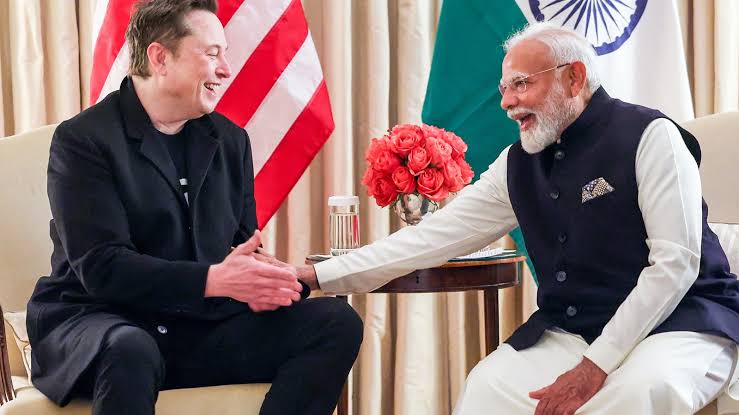
Central Agencies and Bureaucrats: A Heightened State of Vigilance
In a startling development that has sent ripples through India’s political and administrative corridors, central agencies and bureaucrats are grappling with the implications of surveillance devices discovered in the office of a Union Minister. This incident, which has emerged as a matter of significant concern, prompts critical questions about the security of sensitive government spaces and the potential motives behind such covert activities. As investigations unfold, the nation’s top agencies are on high alert, and bureaucrats are navigating a complex landscape of suspicion and scrutiny.
The discovery, which occurred during a routine security sweep, has raised eyebrows and sparked a flurry of speculation. Who could be behind such an audacious act? What information were they seeking? And what does this mean for the sanctity of India’s governmental operations? These questions, while unanswered, underscore the urgency with which authorities are addressing the situation.
Central Agencies and Bureaucrats: A Heightened State of Vigilance
The detection of listening devices in a Union Minister’s office has placed central agencies and bureaucrats in a state of heightened vigilance. Agencies responsible for national security, including the Intelligence Bureau (IB) and other specialized units, have launched comprehensive investigations to determine the origin and purpose of these devices. The sophistication of the equipment suggests a level of expertise that has prompted authorities to consider both domestic and international actors as potential perpetrators.
Officials within the government, speaking on condition of anonymity, have emphasized that such incidents are treated with the utmost seriousness. The sanctity of a Union Minister’s office, a hub for critical policy discussions and strategic decisions, is paramount. The presence of unauthorized surveillance devices not only compromises confidentiality but also raises broader questions about the security protocols in place to protect high-ranking officials.
Bureaucrats, often the backbone of administrative efficiency, find themselves under increased scrutiny as they assist in the investigation. Their role in ensuring the smooth functioning of government operations is now juxtaposed with the need to address potential vulnerabilities within their own ranks. The incident has prompted a reevaluation of internal processes, with a focus on safeguarding sensitive communications.
Who Is Listening? Unraveling the Mystery
The question of “who is listening” looms large over this unfolding saga. The discovery of surveillance devices has ignited curiosity about the motives behind such an intrusion. Could this be an attempt to gather intelligence on critical policy matters? Is it linked to political rivalries, or does it point to external forces seeking to influence India’s governance? These possibilities, while speculative, are being carefully examined by investigators.
Security experts suggest that the placement of listening devices in a Union Minister’s office indicates a targeted effort to access privileged information. Such actions could have far-reaching implications, potentially affecting national security, diplomatic relations, or internal policy decisions. The involvement of central agencies and bureaucrats in piecing together this puzzle is critical, as they work to identify not only the perpetrators but also the extent of any information that may have been compromised.
The government has refrained from making premature statements, opting instead for a measured approach. Official sources have indicated that all necessary steps are being taken to ensure a thorough investigation, with cooperation from multiple agencies. This collaborative effort underscores the gravity of the situation and the commitment to maintaining the integrity of governmental operations.
Bureaucrats on Edge: Navigating a Climate of Suspicion
For central agencies and bureaucrats, the discovery has created an atmosphere of unease. Bureaucrats, who operate in close proximity to sensitive information, are now faced with the challenge of maintaining trust while addressing potential security lapses. The incident has prompted a review of access protocols, with an emphasis on ensuring that only authorized personnel are privy to classified discussions.
The role of bureaucrats in this context cannot be overstated. As custodians of administrative processes, they are tasked with implementing security measures while continuing to support the day-to-day functioning of the government. The current situation has placed them on a delicate tightrope, balancing their operational responsibilities with the need to cooperate fully with investigative agencies.
Some within the bureaucratic community have expressed concern about the broader implications of this incident. Could it signal a deeper breach within the system? Are there additional vulnerabilities yet to be uncovered? These questions, while unsettling, reflect a proactive approach to addressing the issue and preventing future occurrences.
Agencies on High Alert: Strengthening Security Measures
The discovery of surveillance devices has prompted central agencies and bureaucrats to bolster security protocols across government offices. Agencies responsible for counterintelligence are conducting sweeps of other high-profile locations to ensure no additional devices have been planted. These measures, while resource-intensive, are seen as essential to restoring confidence in the security of government spaces.
Technological advancements in surveillance have made it increasingly challenging to detect and neutralize such threats. The devices found in the Union Minister’s office were reportedly compact and sophisticated, highlighting the need for cutting-edge countermeasures. Central agencies are now exploring advanced detection systems and enhanced training for security personnel to address this evolving threat landscape.
In addition to technical upgrades, there is a renewed focus on human intelligence and vetting processes. The government is reviewing the procedures for granting access to sensitive areas, ensuring that only thoroughly vetted individuals are allowed entry. This comprehensive approach reflects a commitment to addressing both immediate concerns and long-term vulnerabilities.
A Call for Transparency and Accountability
As central agencies and bureaucrats work to unravel the circumstances surrounding this incident, there is a growing call for transparency. Stakeholders within and outside the government are urging authorities to provide clarity on the investigation’s progress without compromising national security. This delicate balance is essential to maintaining public trust and ensuring that the incident does not erode confidence in the government’s ability to protect its own operations.
The incident also raises broader questions about the intersection of technology, governance, and security. In an era where surveillance capabilities are increasingly sophisticated, how can governments safeguard their operations? What measures can be taken to prevent such breaches in the future? These questions are likely to shape policy discussions in the coming months, as central agencies and bureaucrats seek to address the root causes of this incident.
For now, the focus remains on the ongoing investigation. Authorities have assured that all necessary resources are being deployed to identify those responsible and to prevent similar occurrences. The cooperation between central agencies and bureaucrats is a testament to the government’s resolve to address this issue with the seriousness it demands.

















